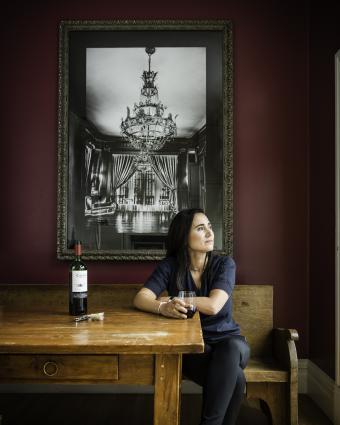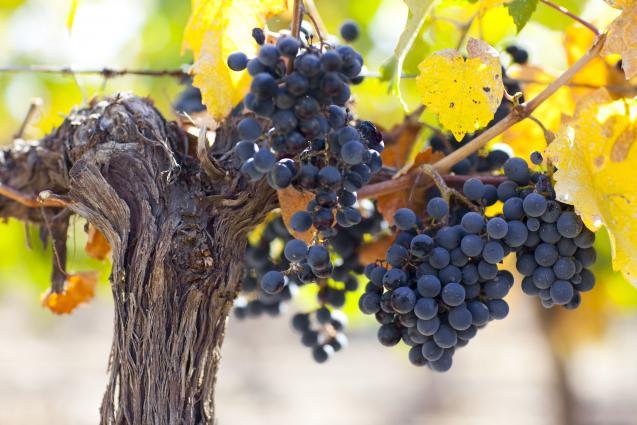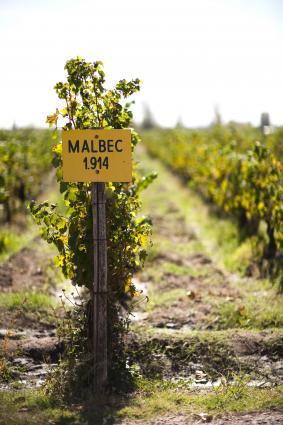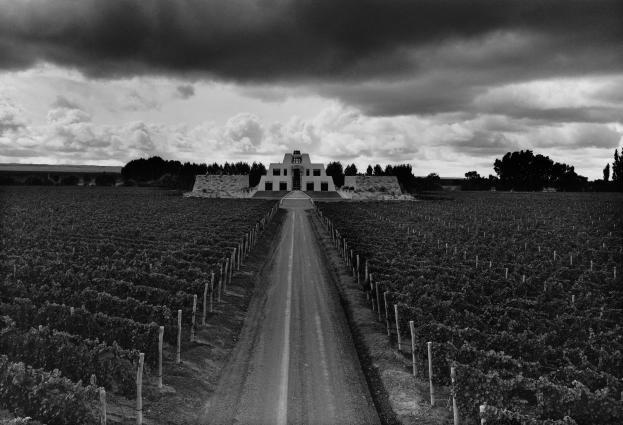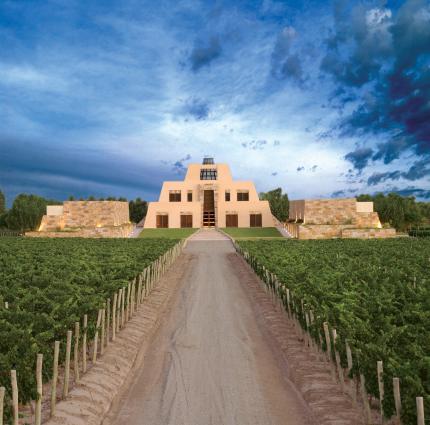
Catena Zapata
Founded in 1902 by Italian Nicola Catena, Catena Zapata is Argentina’s oldest winery still in the founding family’s hands. The winery architecture is distinguished by its Mayan-inspired pyramid design. Catena Zapata is known for its pioneering role in resurrecting the Malbec grape and in discovering extreme high-altitude terroirs in the Andean foothills of Mendoza. Following in her father Nicolás Catena Zapata’s footsteps, fourth-generation vintner Dr. Laura Catena leads the winery and its think-tank, the Catena Institute of Wine. The institute, founded by Dr. Catena in 1995, collaborates with local and foreign universities and has the ambitious mission of advancing Argentina’s winemaking regions for another 200 years. Its research is published in peer reviewed international journals and shared with the wider world wine community. Today, the Catena sisters, Laura and Adrianna, lead the way in preserving Argentina’s old vines and the country’s ungrafted, massale Malbec heritage. Catena Zapata’s Adrianna Vineyard has been awarded more 100-point ratings than any other South American winery, and in 2023, it was voted #1 World’s Best Vineyard by a group of 500 food, wine and travel writers (William Reed of 50 Best, World’s Best Vineyards Awards).
Location of Vineyard
Mendoza is Argentina’s largest and most well-known winemaking region. About 80 percent of Argentina’s wine is produced in Mendoza, which contains more vineyard acreage than the regions of Bordeaux, Burgundy, and Napa Valley combined.
Since the 1980s, Mendoza has become a leader in producing outstanding wines, largely thanks to economist and winemaker Nicolás Catena. He spearheaded the push for investment and research to improve Argentine wine quality and helped establish Malbec as Argentina’s signature grape. It was initially used as a blending grape in southwest France and was prominent in Bordeaux blends prior to the nineteenth-century phylloxera epidemic. It was primarily replaced with replantings of Merlot in Bordeaux and found its true home in Mendoza.
Winemaking and Viticulture Philosophy
Alejandro Vigil has Master’s Degrees in both Winemaking and Irrigation Management from Facultad de Ciencias Agrarias. He began his professional career at the National Agricultural Technology Institute, taking over the Soil Analysis Department at 28 years old. Alejandro has been Chief Winemaker of Bodega Catena Zapata since 2002, receiving the first 100-point score awarded to a South American wine by Robert Parker’s The Wine Advocate and the first 100-point score for an Argentine Chardonnay from James Suckling. He has been recognized as Winemaker of the Year by Tim Atkin and is president of Wines of Argentina.
Catena Zapata
Founded in 1902 by Italian Nicola Catena, Catena Zapata is Argentina’s oldest winery still in the founding family’s hands. The winery architecture is distinguished by its Mayan-inspired pyramid design. Catena Zapata is known for its pioneering role in resurrecting the Malbec grape and in discovering extreme high-altitude terroirs in the Andean foothills of Mendoza. Following in her father Nicolás Catena Zapata’s footsteps, fourth-generation vintner Dr. Laura Catena leads the winery and its think-tank, the Catena Institute of Wine. The institute, founded by Dr. Catena in 1995, collaborates with local and foreign universities and has the ambitious mission of advancing Argentina’s winemaking regions for another 200 years. Its research is published in peer reviewed international journals and shared with the wider world wine community. Today, the Catena sisters, Laura and Adrianna, lead the way in preserving Argentina’s old vines and the country’s ungrafted, massale Malbec heritage. Catena Zapata’s Adrianna Vineyard has been awarded more 100-point ratings than any other South American winery, and in 2023, it was voted #1 World’s Best Vineyard by a group of 500 food, wine and travel writers (William Reed of 50 Best, World’s Best Vineyards Awards).
Location of Vineyard
Mendoza is Argentina’s largest and most well-known winemaking region. About 80 percent of Argentina’s wine is produced in Mendoza, which contains more vineyard acreage than the regions of Bordeaux, Burgundy, and Napa Valley combined.
Since the 1980s, Mendoza has become a leader in producing outstanding wines, largely thanks to economist and winemaker Nicolás Catena. He spearheaded the push for investment and research to improve Argentine wine quality and helped establish Malbec as Argentina’s signature grape. It was initially used as a blending grape in southwest France and was prominent in Bordeaux blends prior to the nineteenth-century phylloxera epidemic. It was primarily replaced with replantings of Merlot in Bordeaux and found its true home in Mendoza.
Winemaking and Viticulture Philosophy
Alejandro Vigil has Master’s Degrees in both Winemaking and Irrigation Management from Facultad de Ciencias Agrarias. He began his professional career at the National Agricultural Technology Institute, taking over the Soil Analysis Department at 28 years old. Alejandro has been Chief Winemaker of Bodega Catena Zapata since 2002, receiving the first 100-point score awarded to a South American wine by Robert Parker’s The Wine Advocate and the first 100-point score for an Argentine Chardonnay from James Suckling. He has been recognized as Winemaker of the Year by Tim Atkin and is president of Wines of Argentina.












